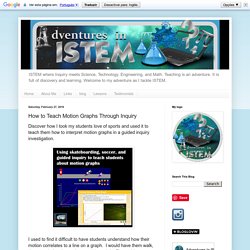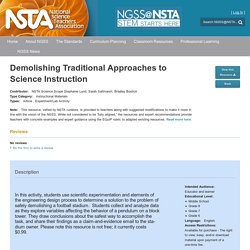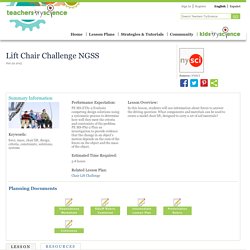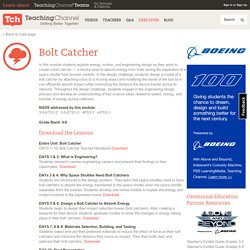

ADVENTURES IN ISTEM: How to Teach Motion Graphs Through Inquiry. Discover how I took my students love of sports and used it to teach them how to interpret motion graphs in a guided inquiry investigation.

I used to find it difficult to have students understand how their motion correlates to a line on a graph. I would have them walk, then stand, then jog and we would graph it. The problem was that the graph was made after the motion not at the same time they were doing that motion. That all changed when I discovered two websites. These two websites gave me the opportunity to first do an inquiry investigation where they were able to see the motion of an object and the graph they were creating at the same time.
The first activity I do is a guided inquiry activity using the motion of skateboarders from the site: skateboarders- distance time graphs of skateboarders. The second activity I do is another guided inquiry but with more information given using the site Football Distance Time Graphs. Lesson Balancing Act. Demolishing Traditional Approaches to Science Instruction. MS-ETS1-3 Analyze data from tests to determine similarities and differences among several design solutions to identify the best characteristics of each that can be combined into a new solution to better meet the criteria for success.

Clarification Statement: none Assessment Boundary: none This resource is explicitly designed to build towards this performance expectation. Comments about Including the Performance Expectation Students are asked to determine the effects of bob volume (“size”), angle of swing, and bob mass, on the ability to remove the top five sections of a block tower. They analyze their collected data to determine the best solution for achieving the task, then share their findings as a claim-evidence paragraph. Eighth grade Lesson Newton's 1st Law: Coin Activity (Inertia) - Newton's Law Expo (1 of 9) Activity Create a Crater. Eighth grade Lesson The Wagon and The Ball. Amuse park physics. Velocity and Variable Relationships Lessons. Lift Chair Challenge NGSS. Prerequisites In previous lessons, students should have familiarity with the concepts of “force” and “mass”.

Lesson note: This task focuses on a specific current event surrounding a natural hazard event in Nepal. Alternatively, this task could be done around a local natural hazard. What are some natural hazards they might encounter in their own local environment? Examples will vary depending on where students are, but may include severe weather, flooding, tornadoes, hurricanes, etc. Ask students to consider if there would be communities in their own area that may become isolated when natural hazards hit? Driving Question: What components and materials can be used to create a model chair lift, designed to carry a set of aid materials? Concord Consortium. In the fall of 2011, SmartGraphs conducted a randomized experimental trial in 29 Pennsylvania schools.

In 14 schools, 17 experimental teachers used SmartGraphs activities with 49 8th and 9th grade Physical Science classes studying the motion of objects (such as position-time and velocity-time graphs). In the other 15 schools, 18 control teachers taught the same topic using the same textbooks, with 42 Physical Science classes. This study sought to answer two research questions. A summary of findings is provided below. In October 2013 the Journal of Science Education and Technology published an article about our research on its website; for additional information besides the summary, see the accepted manuscript, Helping Students Make Sense of Graphs: An Experimental Trial of SmartGraphs Software.
Gain Scores from Pre to Post Test Answers to both research questions were positive, which is encouraging. Unit On Theories Of Force, Motion And Engineering Design. In this module students explore energy, motion, and engineering design as they work to create a bolt catcher — a device used to absorb energy from bolts during the separation of a space shuttle from booster rockets.

In the design challenge, students design a model of a bolt catcher by attaching a box to a moving object and modifying the inside of the box so it can efficiently absorb impact while minimizing the distance the device travels during its rebound. Throughout the design challenge, students engage in the engineering design process and develop an understanding of key science ideas related to speed, energy, and transfer of energy during collisions. NGSS addressed by this module: 3-5-ETS1-2 3-5-ETS1-3 4PS3-1 4-PS3-3 Grade Band: 4-6 Download the Lessons Entire Unit: Bolt Catcher DAYS 1–10: Bolt Catcher Teacher Handbook Download DAYS 1 & 2: What is Engineering? DAYs 3 & 4: Why Space Shuttles Need Bolt Catchers Students are introduced to the design problem. Introduce Students To Challenges Of Unmanned Aerial Systems (Drones) Unmanned aerial vehicles (UAVs) are air vehicles which lack onboard passengers and crew.

They can be autonomous “drones” or remotely piloted vehicles. In this module, students are challenged to develop possible solutions to the engineering design problem of developing a UAV that is capable of carrying a payload over a given distance. Students select a specific use for their glider (reconnaissance, delivering supplies, etc.). They then test different glider designs and materials.